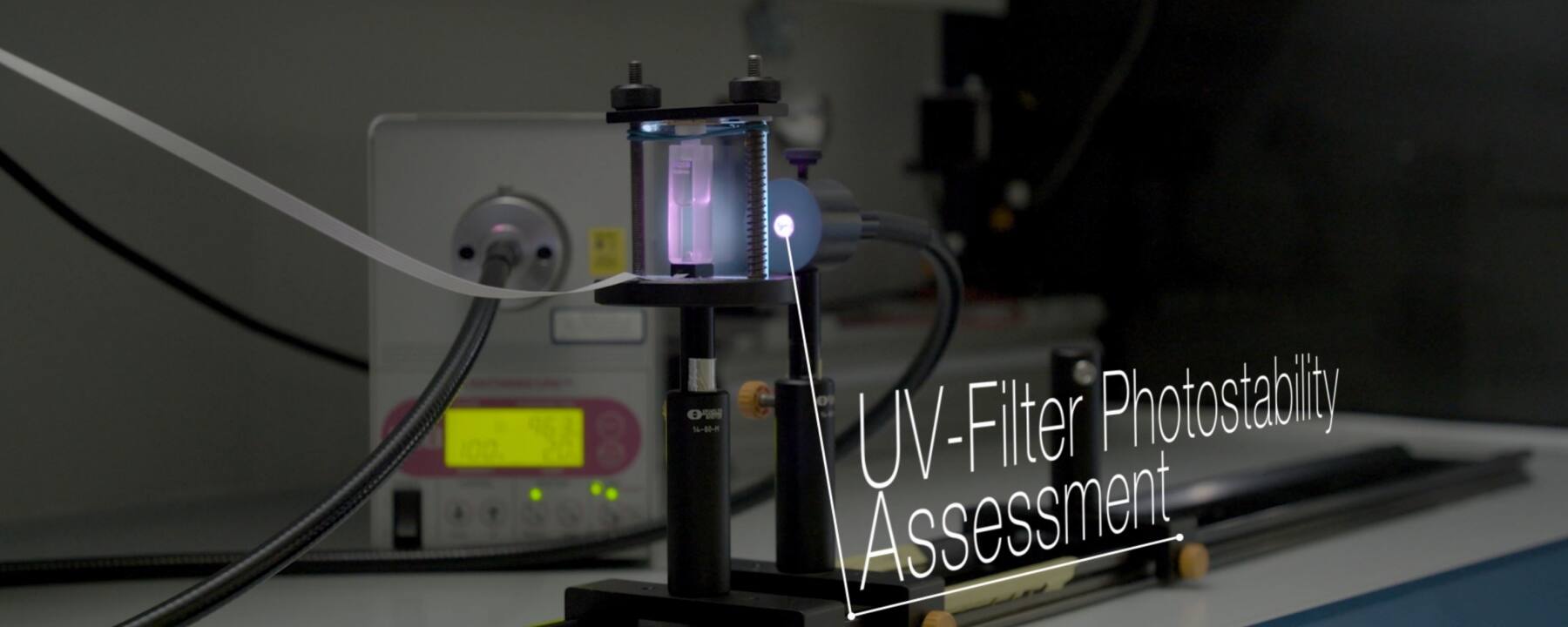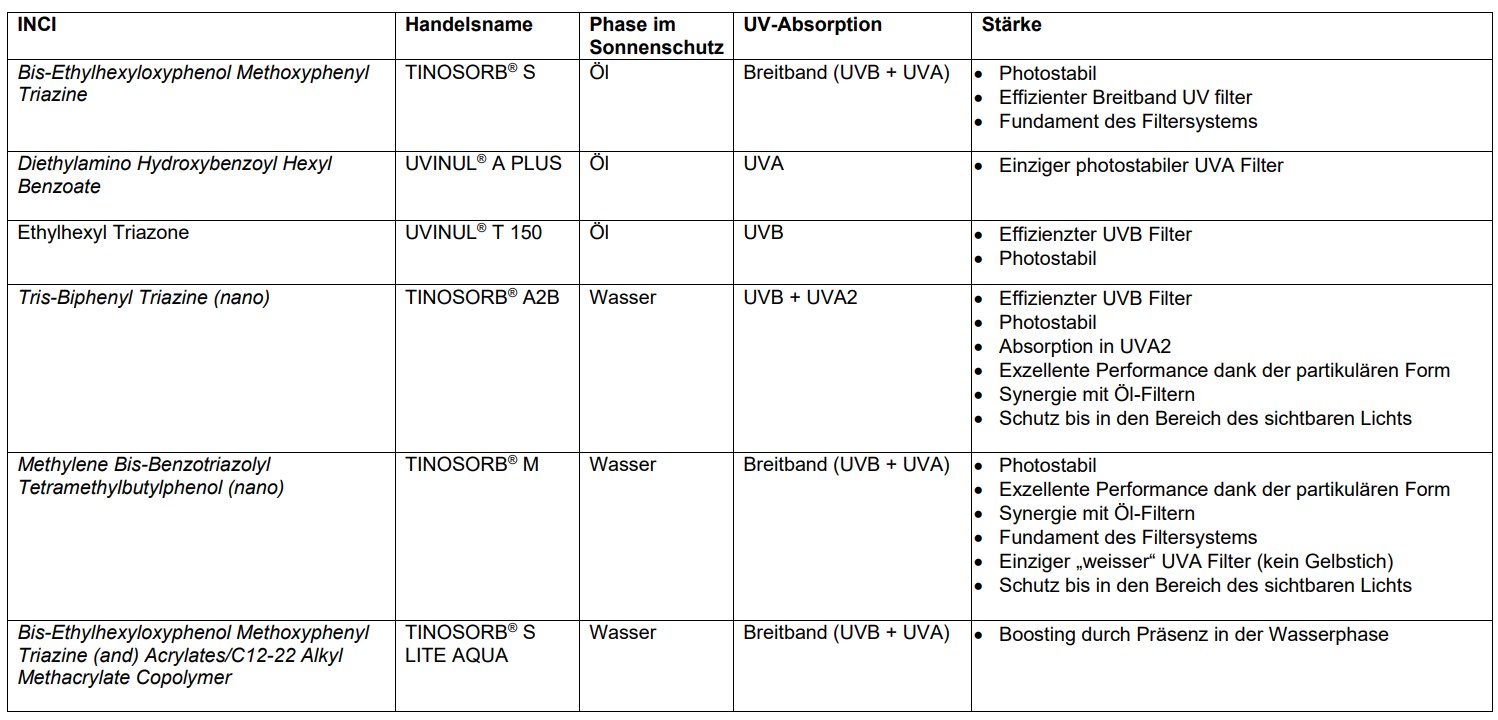
Sunlight
Photostability plays a key role
When purchasing sunscreen, most consumers look at the sun protection factor. The sensory experience likewise plays a role in whether they will buy that particular product again or not. Everyone should ask themselves the following question, too: is my sunscreen actually photostable? Sometimes it is printed directly on the packaging. Checking the INCI list also helps to see if it contains photostable filters. We wish to explain why photostability is so important.
When assessing the quality of a UV filter, sun cream or sunscreen in general, one issue is always important: photostability. The terms 'UV stability' and 'light resistance' are also frequently used in this context. When we consider stability, we immediately think of terms such as durability, longevity or resistance. If a product is not stable, this can lead to undesirable results. If something is not photostable, the quality of the product is liable to suffer greatly. When subject to radiation, the effective spectrum and rate of absorption changes. This affects the level of protection provided throughout the day. If a product is not photostable, its absorption profile will change and decrease. This is not the case if it contains a photostable filter combination.
A UV filter must be photostable in order to withstand UV radiation. If this is not the case, the filter becomes unstable and degrades under UV irradiation. Photostability is an absolute must to achieve safe, unchanged and good sun protection. Please note: If two formulations claim the same SPF, the efficiency of a formulation with a photounstable filter system against sunburn is equal to the efficiency of a formulation with photostable filters. But the unstable version requires many more filters to be added than would be required of the filters would be photostable.
When color loses its color
To say it in a more figurative way: people have known for hundreds of years that the sun's rays and radiant power can affect chemical products in various ways. Even so, it took quite a while before anyone – we're talking painters – realized there are certain colors and color combinations that showed different reactions depending on the area of application. There were colors, for example, that were very resilient and permanent when used in indoor areas, but quickly lost their beauty and radiance when exposed to the sun on the outside of a building. They faded and in some cases became black.
This "phenomenon" was something we dealt with even up to just a few years ago. UV protection for objects and paint is not a very old concept. Everyone has seen a faded plastic chair or a car with dulled paint that has fallen victim to the sun. To tie this in with cosmetics, the packaging for products today protects them against light, helps them maintain their effectiveness and increases their shelf life.
Dr. Myriam Sohn: How do I know it is a good UV filter?
Now back to sunscreens. Photounstable UV filters, whose main function in a sun cream is to protect us from the unpleasant effects of too much UV radiation, degrade and lose their performance when exposed to sunlight. It's a paradox, actually. Protection has to be protected or supported.
The formation of radicals – an unwanted situation
This instability leads to other new molecules. In principle, these new compounds are degradation products that have not been individually tested or studied. And no one wants to have molecules on their skin that they don't know. Trust us.
The molecules resulting from this process vary. They are dependent on what else is contained in the product or, more precisely, in the applied product layer (the product film). And now the topic of free radicals comes full circle. The fact is that many of these degradation products are free radicals that can react with other sensitive molecules of the formulation being applied or even with the skin compounds. This can lead to skin reactions, such as acne mallorca. This is, of course, undesirable and must be prevented. This is why the use of photostable UV filters, which remain stable when exposed to sunlight, is of particular interest.
In our research and development laboratory in Grenzach, we test new UV filter substances for use in sunscreens. We always keep an eye on the subject of "stability under influence of light".
There are certain UV filters that are highly photostable:
- Tinosorb® M (INCI: Methylene Bis-Benzotriazolyl Tetramethylbutylphenol (nano) )
- Tinosorb® S (INCI: Bis-Ethylhexyloxyphenol Methoxyphenyl Triazine)
- Tinosorb® S Lite Aqua (INCI: Bis-Ethylhexyloxyphenol Methoxyphenyl Triazine (and) Acrylates/C12-22 Alkyl Methacrylate Copolymer)
- Uvinul® A Plus (INCI: Diethylamino Hydroxybenzoyl Hexyl Benzoate)
- Uvinul® T 150 (INCI: Ethylhexyl Triazone)
- Tinosorb A2B® (INCI: Tris-Biphenyl Triazine (nano) )
by BASF are part of our series of photostable filters. The INCI list in the market products help you find these filters when purchasing your next sunscreen product. More technical details about the benefits of those filters can be found in the table at the end of this article.
Challenges to be overcome
On the other hand, there are also UV filters that are not photostable on their own. In these cases, formulators can adapt the filter combinations to improve photostability to a certain degree. Tinosorb® S is an example of this. When added to a photounstable filter combination, Tinosorb® S can increase the photostability of this filter combination and can serve as a support element and booster, thereby improving the overall efficiency of a sunscreen. However, it is never possible to achieve a full photostability with these kinds of formulations/combinations.
By the way, the greatest culprit behind the formation of free radicals in the skin is UV-A radiation, though UV-B and even visible light (VIS) can also lead to their creation. In other words, the best protection against the formation of free radicals is provided when the sunscreen is effective against long-wave UV-A and blue light waves. BASF is well equipped to handle this, too: its Tinosorb® M and Tinosorb® A2B products are two solutions that offer this exact protection since they absorb in the long UVA range and enable a significant reduction of the blue light transmission into skin.
What the consumer needs to take away from all this: if a sunscreenis rated as photostable, then this is what it is. Keep photostability and durability in mind. Photostable sunscreens will protect you – and your skin will thank you for it.
So that you can immediately see which products contain our selected UV filters, we decipher them and assign clear names for you.

